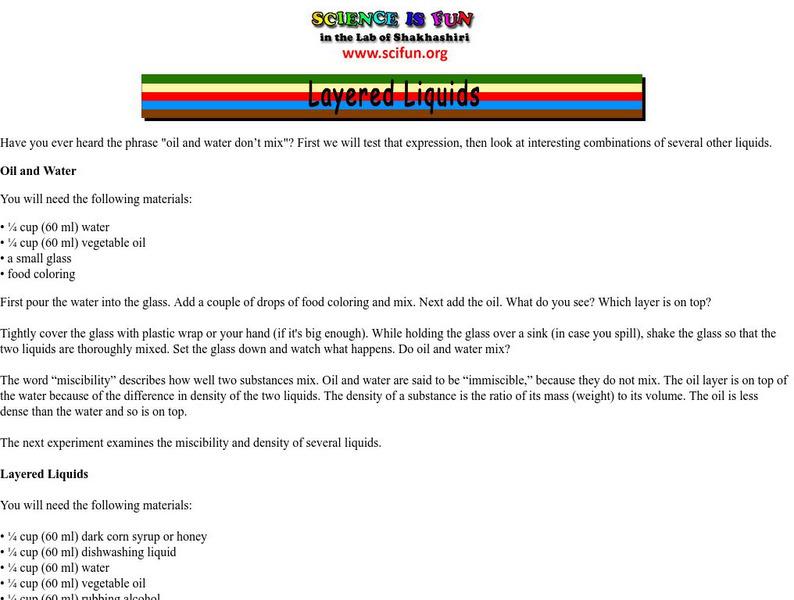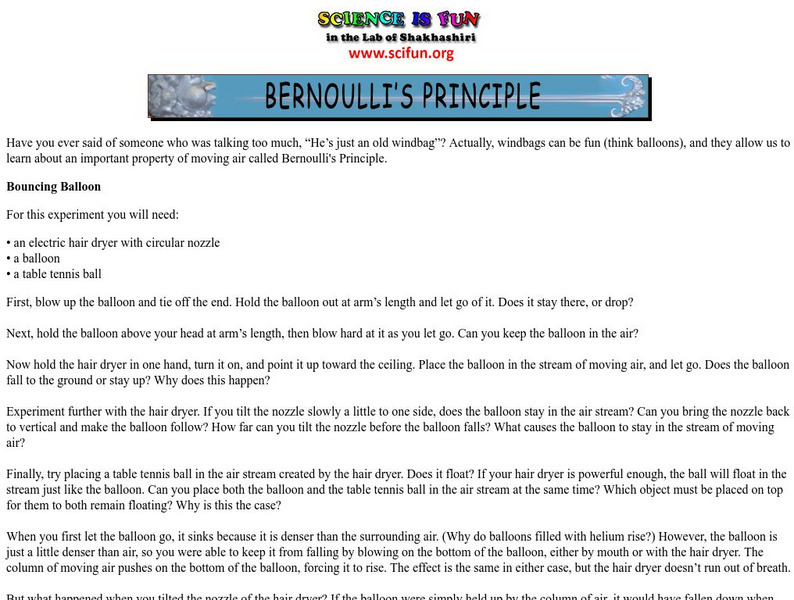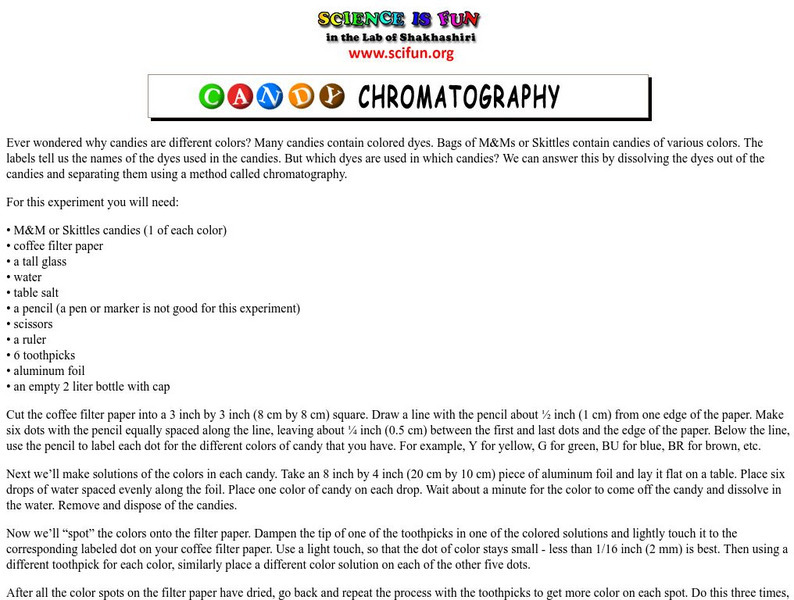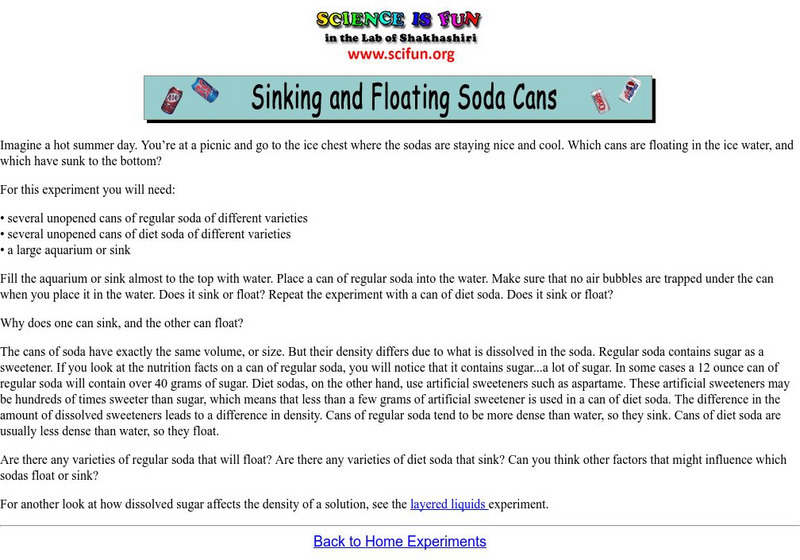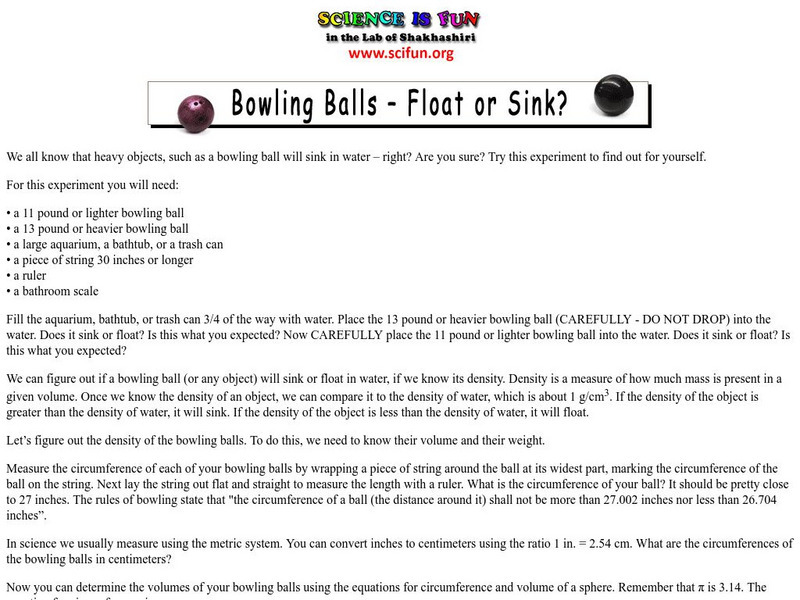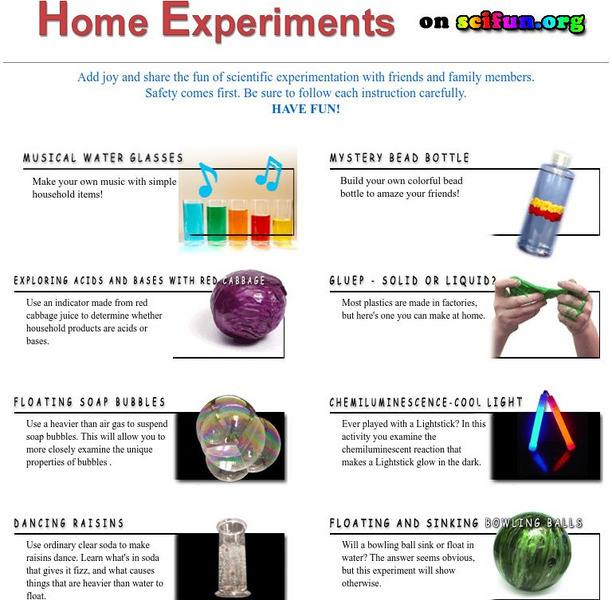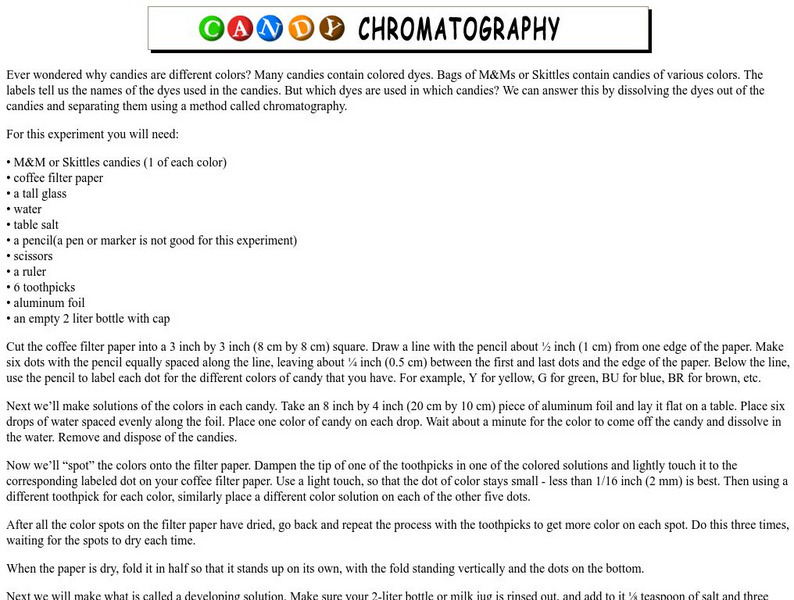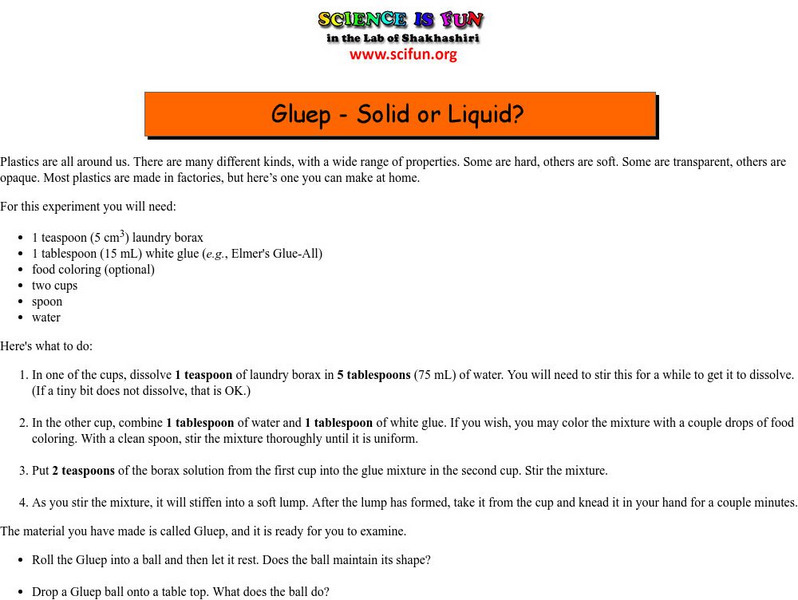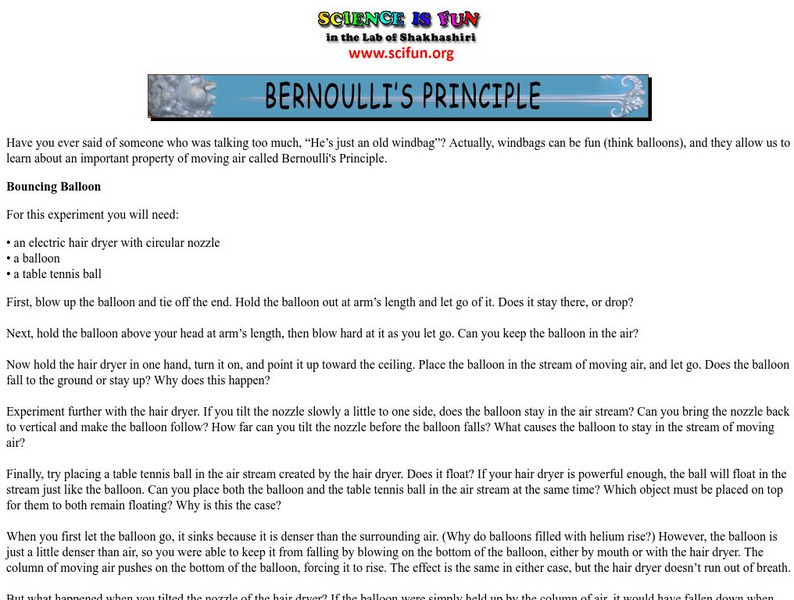Science is Fun
University of Wisconsin: Science Is Fun
Professor Bassam Z. Shahaskin of the University of Wisconsin home provides "science activities, demonstration shows, videos, and books" that aim to make science "fun" for adults and children.
Science is Fun
Chemical of the Week: Sulfuric Acid
A brief description of sulfuric acid, its reactions, and its uses. Includes reaction equations.
Science is Fun
University of Wisconsin: Buckyballs [Pdf]
A detailed explanation of buckyballs, their discovery, properties, and current research. A good explanation of how they were originally discovered.
Science is Fun
University of Wisconsin: Exploring Acids and Bases
Get a brief overview of acids, bases and pH. Explore the pH of a number of different household substances using an extract of red cabbage.
Science is Fun
Science Fun: Layered Liquids
This experiment allows you to dramatically demonstrate the different densities of five different common household liquids.
Science is Fun
Science Fun: Bernoulli's Principle
This simple lab demonstrates Bernoulli's Principle using a balloon, a tennis ball and a hair dryer.
Science is Fun
Fun Science: Candy Chromatography
Using simple household items like M&Ms and coffee filters, you can demonstrate paper chromatography. This simple lab will show you the dyes that make up the different color coatings on M&Ms.
Science is Fun
Fun Science: Fireproof Balloon
Water has the ability to absorb lots of energy before it heats up. You can demonstrate this trait by trying to pop a balloon (containing water) with a flame.
Science is Fun
Fun Science: The Collapsing Can
Air pressure can be dramatically shown with this simple experiment that only requires an aluminum can, tongs, a 2-3 quart sauce pan and a stove.
Science is Fun
Fun Science: Sinking and Floating Soda Cans
Why do some pop cans float in water while others don't? This easy experiment is a great example of the principle of density.
Science is Fun
Fun Science: Bending Water
Find out how you can bend water with the help of static electricity. All you'll need is a faucet and a comb.
Science is Fun
Fun Science: Lumpy Liquids and Squishy Solids
Investigate the properties of a strange substance which acts like a liquid and a solid. This simple experiment can be done with corn starch and water.
Science is Fun
Fun Science: Bowling Balls: Sink or Float?
For a dramatic illustration of density check out this demonstration. It's simple to do, only requiring a bowling ball and some water.
Science is Fun
University of Wisconsin Madison: Chlorophyll
This site on chlorophyll discusses what it is, its structure, molecules with similar structure, its role in photosynthesis, and its absorption spectrum.
Science is Fun
University of Wisconsin: Chemical of the Week: Chlorine and Sodium Hydroxide
Science is Fun website on chlorine and sodium hydroxide. Shows reactions between the two, as well as general background on each.
Science is Fun
University of Wisconsin: Home Experiments
This resource presents a collection of simple science experiments kids can do using household materials. The procedures include diagrams and are simple to follow.
Science is Fun
Science Is Fun: Candy Chromatography
In this experiment, you learn about chromatography when you separate the dyes in candies like M & M's and Skittles to see how many dyes are in each color.
Science is Fun
Science Is Fun: Floating Soap Bubbles
In this experiment you learn how to generate carbon dioxide inside a container, and float soap bubbles above the gas. Once the bubbles are suspended, it is possible to observe them closely, which is normally very difficult to do....
Science is Fun
Science Is Fun: Gluep Solid or Liquid?
In this experiment, students create a polymer substance called Gluep, then investigate its properties. Includes a detailed explanation of how the polymer molecules bond together to form the plastic.
Science is Fun
Science Is Fun: Chemiluminescence Cool Light
An experiment in chemiluminescent reactions using a commercial Lightstick. As the temperature conditions are changed, students observe changes in the Lightstick and record their observations.
Science is Fun
Science Is Fun: Layered Liquids
An investigation into what properties liquids have that enable them to sit in separate layers in a container.
Science is Fun
Science Is Fun: Build an Electric Motor
Instructions for how to build a simple electric motor.
Science is Fun
Science Is Fun: Bernoulli's Principle
An experiment with a balloon and a wind tube that investigate how Bernoulli's Principle applies to a stream of moving air.
Science is Fun
Science Is Fun: Rubber Bands and Heat
An experiment to investigate the thermal properties of rubber by studying its behavior in different scenarios. A discussion of how entropy explains what is observed is provided.



